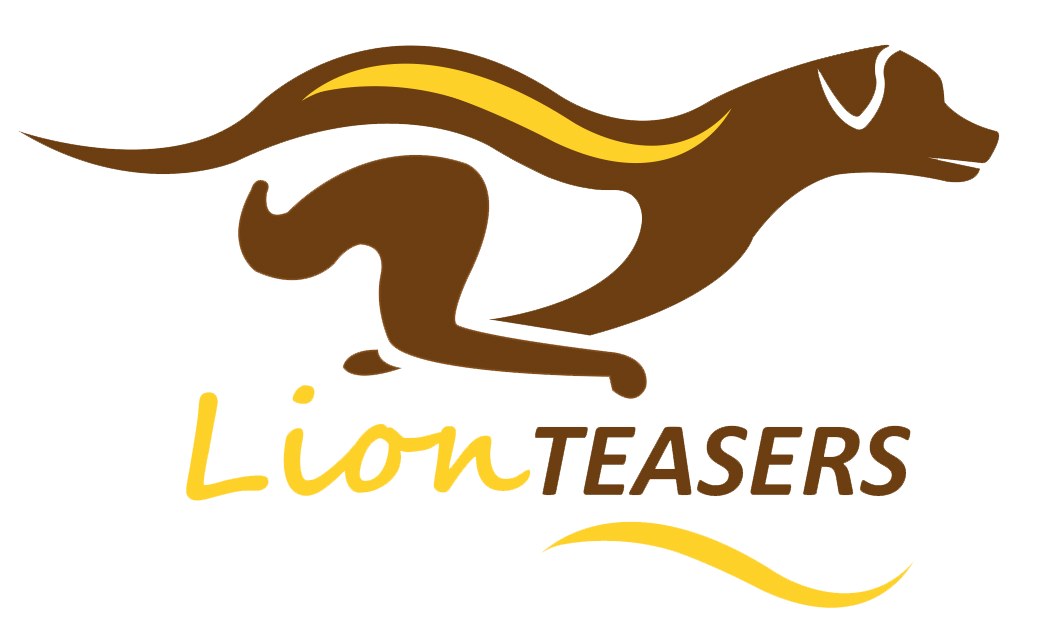De Rhodesian Ridgeback
De Rhodesian Ridgeback is afkomstig uit zuidelijk Afrika (Zimbabwe, voormalig Rhodesia). Het ras werd in 1926 voor het eerst erkend door de Kennel Union of South Africa (KUSA).
Het kenmerk van het ras is de pronk, of streep of ridge, op de rug die de Rhodesian Ridgeback heeft geërfd van de honden die destijds bij de KhoiKhoi (ook ‘bushmen’ of San genoemd) leefden. Deze pronk op de rug wordt gevormd door de in tegengestelde richting van de overige vacht groeiende haarstreep, midden over de rug.
Dit opvallende raskenmerk viel hondenliefhebbers in Europa op. In 1935 verscheen onderstaand filmpje al: http://www.britishpathe.com/video/lion-dogs/query/Park
Aangezien de Rhodesian Ridgeback is voortgekomen uit een mix van diverse honden bestonden er Rhodesian Ridgebacks met verschillende kleuren (van het bekende tarwekleur tot gestroomd, bruin, blauw, met grote witte borstvlekken en witte poten). Toen de rasstandaard werd vastgesteld werden alleen nog de tarwekleurige Ridgebacks geaccepteerd.


Gebruiksdoel
Rhodesian Ridgebacks zijn in oorsprong gefokt om zelfstandig te kunnen opereren gedurende de jacht en om huis en haard (en vee) te verdedigen. Ze zijn toentertijd geselecteerd op eigenschappen als onverschrokkenheid, moed, wendbaarheid, vermogen om agressie te tonen, spierkracht, intelligentie, behendigheid, snelheid en uithoudingsvermogen. De Rhodesian Ridgebacks werden door jagers in zuidelijk Afrika in koppels of groepen vooruit gestuurd om de prooi (waaronder leeuwen) op te zoeken, af te leiden en deze te stellen (op de plaats te houden). De honden moesten slim, behendig en voorzichtig genoeg zijn om uit de klauwen van o.a. leeuwen te blijven. Een atletische bouw (waardoor ze soepel en snel waren) hielp hen daarbij.
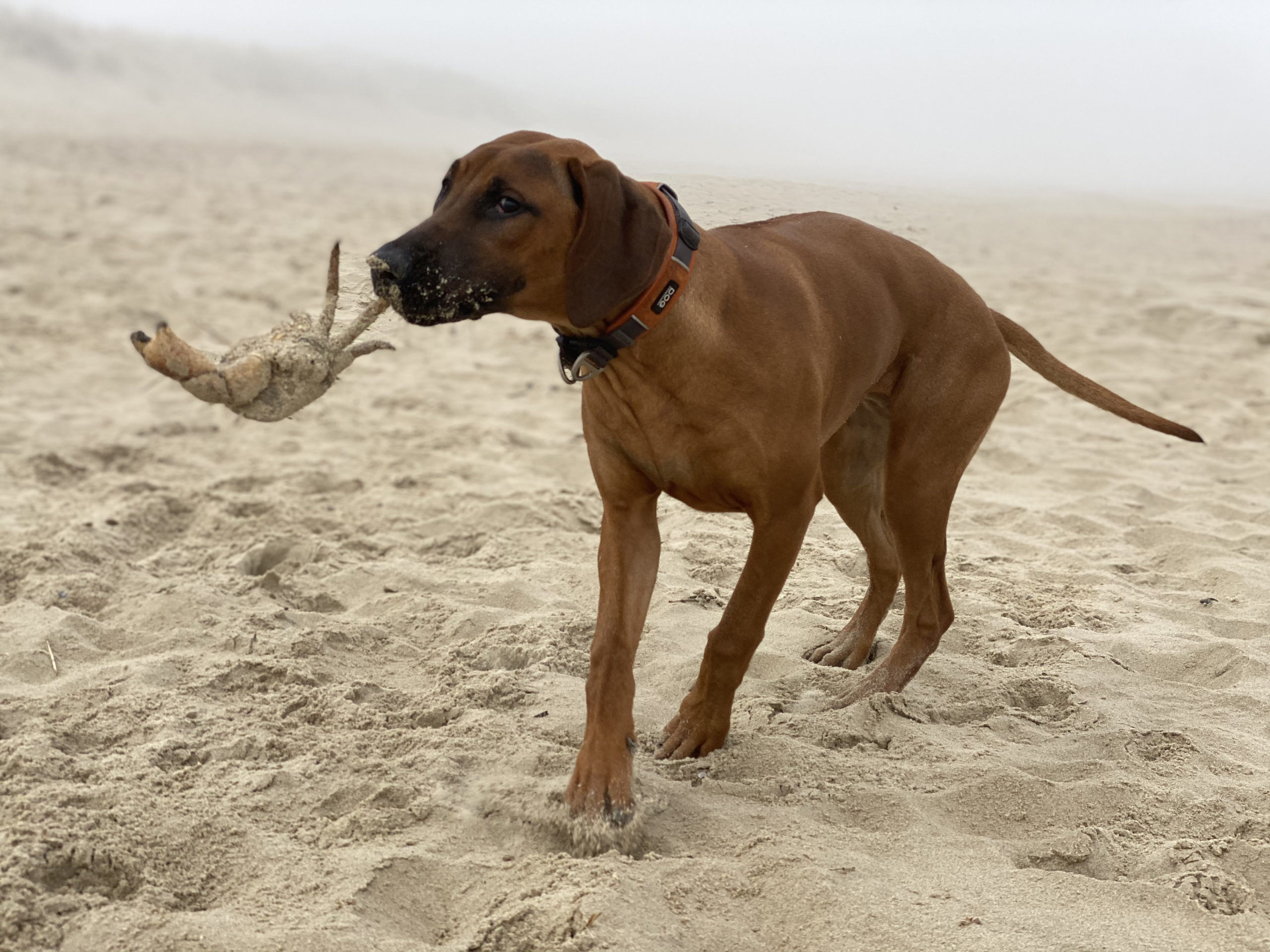
Karakter-
eigenschappen
Aangezien de Rhodesian Ridgeback tegenwoordig voornamelijk als huishond wordt gehouden en in een leefomgeving leeft die nog maar weinig van doen heeft met de Afrikaanse savanne, zijn eigenschappen als onverschrokkenheid en het vermogen om agressie te tonen niet meer noodzakelijk en zelfs ongewenst. Rhodesian Ridgebacks zijn van nature loyaal naar de baas, maar wantrouwig naar vreemden. Ze zijn ook beschermend, maar het beschermende karakter mag niet leiden tot agressie. Eigenschappen als intelligentie, onderscheidend – en probleemoplossend vermogen en een zachtmoedig en stabiel karakter voorkomen dat het argwanende oerinstinct kan uitmonden in agressie.
De Rasstandaard
De beschrijving van de rasstandaard voor de Rhodesian Ridgeback is in vergelijking met die van sommige andere hondenrassen vrij kort. Het voorkomen van verschillende typen Rhodesian Ridgeback kan mede door deze relatief korte beschrijving worden verklaard (niet alle uiterlijke kenmerken zijn ‘tot achter de komma’ vastgelegd).
Hieronder wordt de complete rasstandaard weergegeven.
The Rhodesian Ridgeback Breeding Standard is :
- FCI – Standard n.146
- Date of publication of the Valid Original Standard: December 10th, 1996
- Origin: Southern Africa
- Standard supplied by the Kennel Union of Southern Africa and the Zimbabwe Kennel Club.
Utilisation
The Rhodesian Ridgeback is still used to hunt game in many parts of the world, but is especially prized as family pet and watch-dog
FCI Classification
Group 6 Scent hounds and related breeds
Section 3 Related breeds. Without working trial
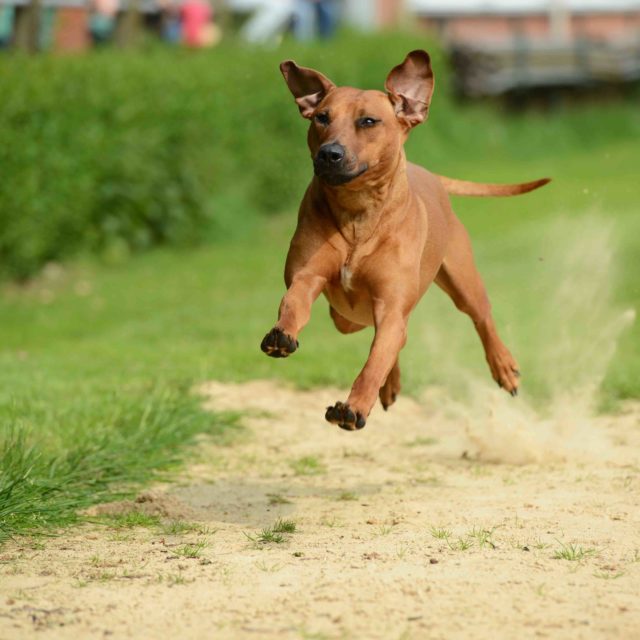
Brief Historical Summary
The Rhodesian Ridgeback is presently the only registered breed indigenous to southern Africa. Its forbears can be traced to the Cape Colony of Southern Africa, where they crossed with the early pioneer’s dogs and the semi-domesticated, ridged Hottentot hunting dogs. Hunting mainly in groups of two or three, the original function of the Rhodesian Ridgeback or Lion dog was to track game, especially lion, and, with great agility, keep it at bay until the arrival of the hunter. The original standard, which was drafted by F.R. Barnes, in Bulawayo, Rhodesia, in 1922, was based on that of the Dalmatian and was approved by the South African Kennel Union in 1926.
General Appearance
The Rhodesian Ridgeback should represent a well balanced, strong, muscular, agile and active dog, symmetrical in outline, and capable of great endurance with a fair amount of speed. The emphasis is on agility, elegance and soundness with no tendency towards massiveness. The peculiarity of the breed is the ridge on the back, which is formed by the hair growing in the opposite direction to the rest of the coat. The ridge is the escutcheon of the breed. The ridge must be clearly defined, symmetrical and tapering towards the haunch. It must start immediately behind the shoulders and continue to the hip (haunches) bones. The ridge must contain only two crowns, identical and opposite each other. The lower edges of the crowns must not extend further down the ridge than one-third of its length. A good average width of the ridge is 5 cm (2″).
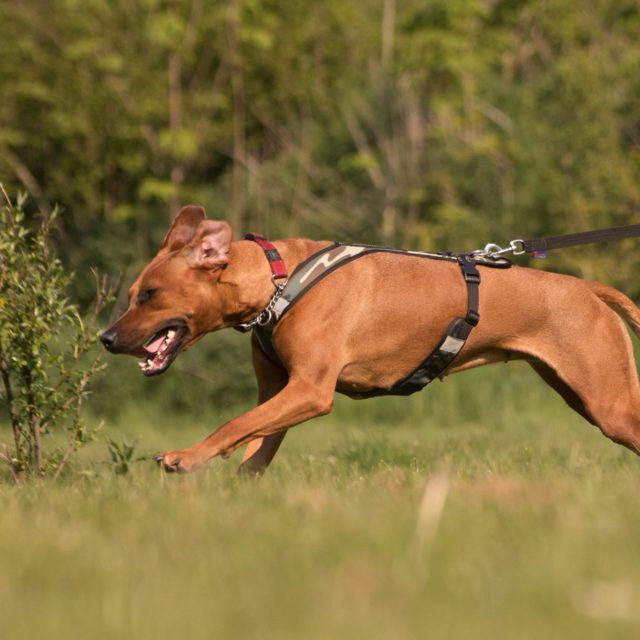
Behaviour
Dignified, intelligent, aloof with strangers, but showing no aggression or shyness.
HEAD – CRANIAL REGION Skull
Should be of fair length (width of head between ears, distance from occiput to stop, stop to end of nose, should be equal), flat and broad between the ears; the head should be free from wrinkles when in repose.
Stop
The stop should be reasonably well defined and not in one straight line from the nose to the occipital bone.
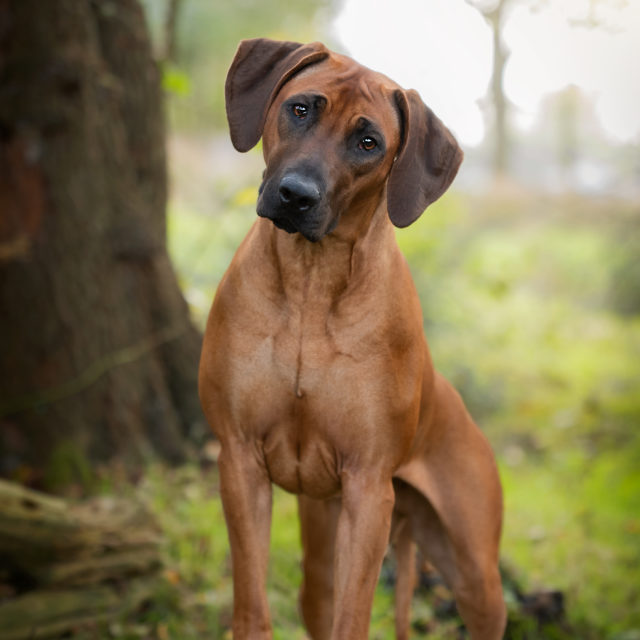
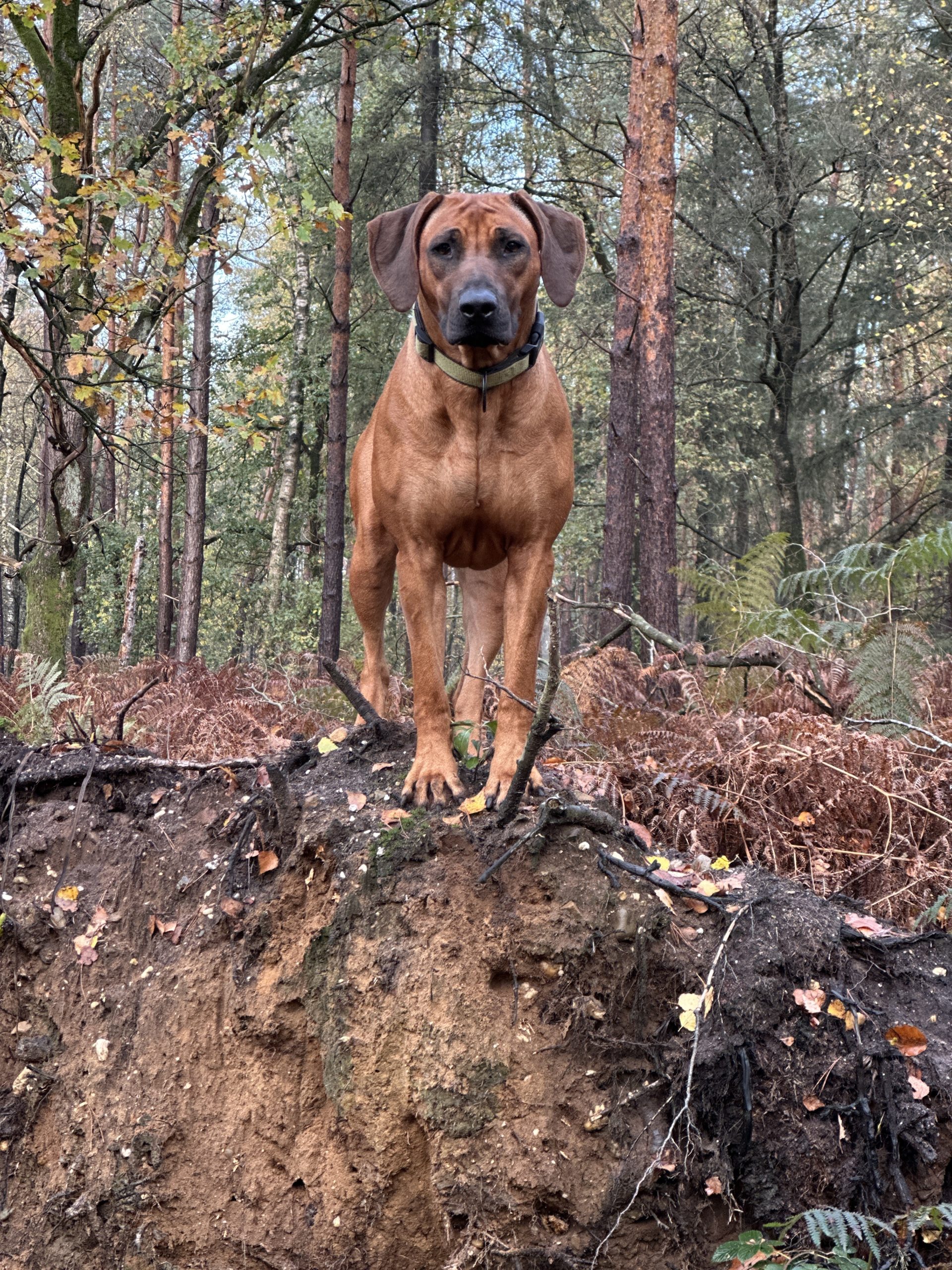
Facial Region
Nose The nose should be black or brown. A black nose should be accompanied by dark eyes, a brown nose by amber eyes.
Muzzle The muzzle should be long, deep and powerful.
Lips The lips should be clean, closely fitting the jaws.
Mouth Jaws strong, with a perfect and complete scissor bite, i.e. the upper teeth closely overlapping the lower teeth and set square to the jaws. The teeth must be well developed, especially the canines or holders.
Cheeks Cheeks should be clean.
Eyes Should be moderately well apart, round bright and sparling, with intelligent expression, their colour harmonising the colour of the coat.
Ears Should be set rather high, of medium size, rather wide at base, and gradually tapering to a rounded point. They should be carried close to the head.
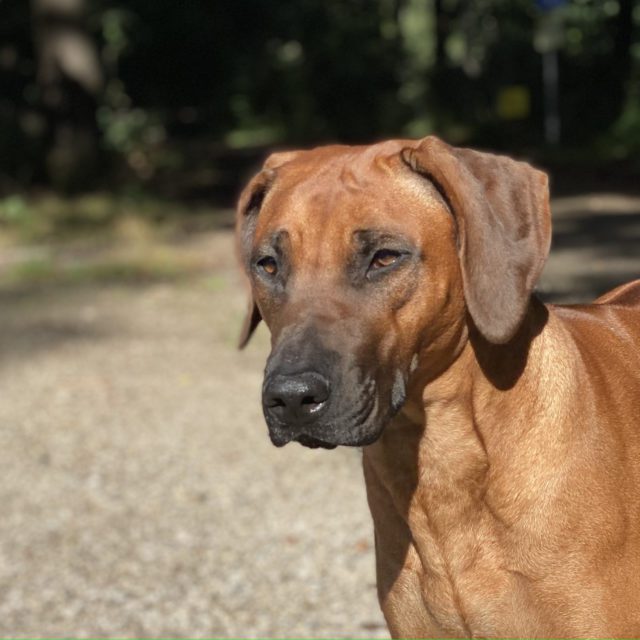
Neck and Body
Neck Should be fairly long, strong and free from throatiness.
BODY – Back Powerful.
Loins Strong, muscular and slightly arched.
Chest Should not be too wide, but very deep and capacious; the brisket should reach to the elbow.
Forechest Should be visible when viewed from the side.
Ribs Moderately well sprung, never rounded like barrel-hoops.
Tail and Limbs
TAIL Should be strong at the root and gradually tapering towards the end, free from coarseness. It should be of moderate length. It should not be attaced too high nor too low, and should be carried with a slight curve upwards, never curled.
LIMBS – Forequarters The forelegs should be perfectly straight, strong and well boned, with the elbows close to the body. When viewed from the side, the forelegs should be wider than viewed from the front. Pasterns should be strong with slight spring.
Shoulders The shoulders should be sloping, clean and muscular, denoting speed.
Feet The feet should be compact and round, with well arched toes, and tough elastic pads, protected by hair between the toes and pads.
Hindquarters In the hind legs the muscles should be clean, well defined, good turn of stifle and strong hocks well let down.
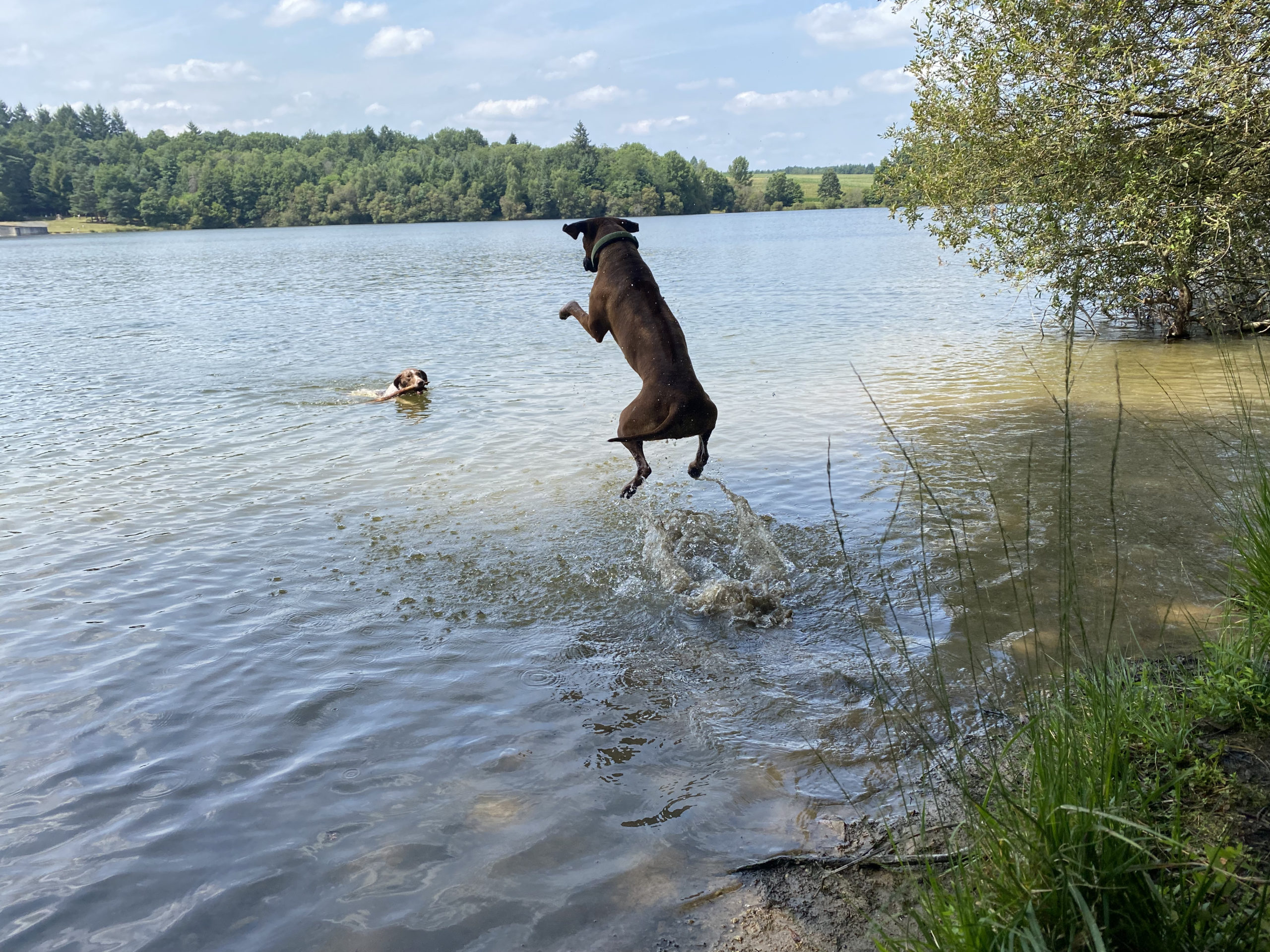
Movement and Coat
GAIT/MOVEMENT Straight forward, free and active.
COAT – Hair Should be short and dense, sleek and glossy in appearance, but neither woolly nor silky.
Colour Light wheaten to red wheaten. A little white on the chest and toes is permissible, but excessive white hairs here, on belly, or above toes is undesirable. A dark muzzle and ears permissible. Excessive black hairs throughout the coat are highly undesirable.
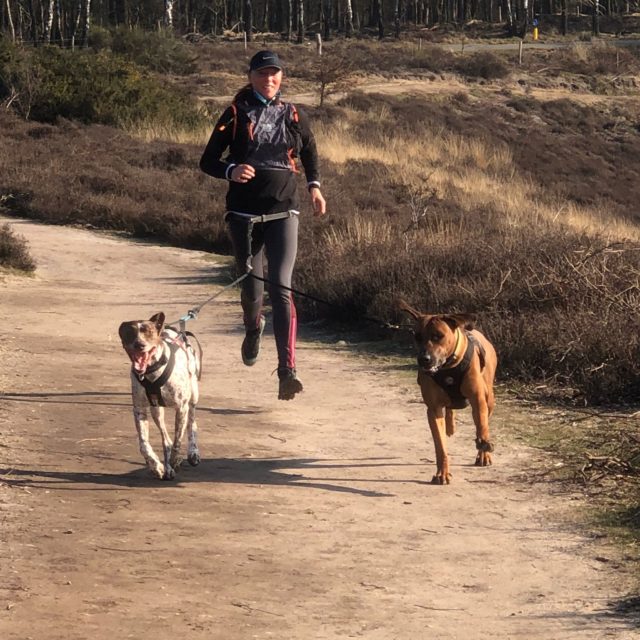
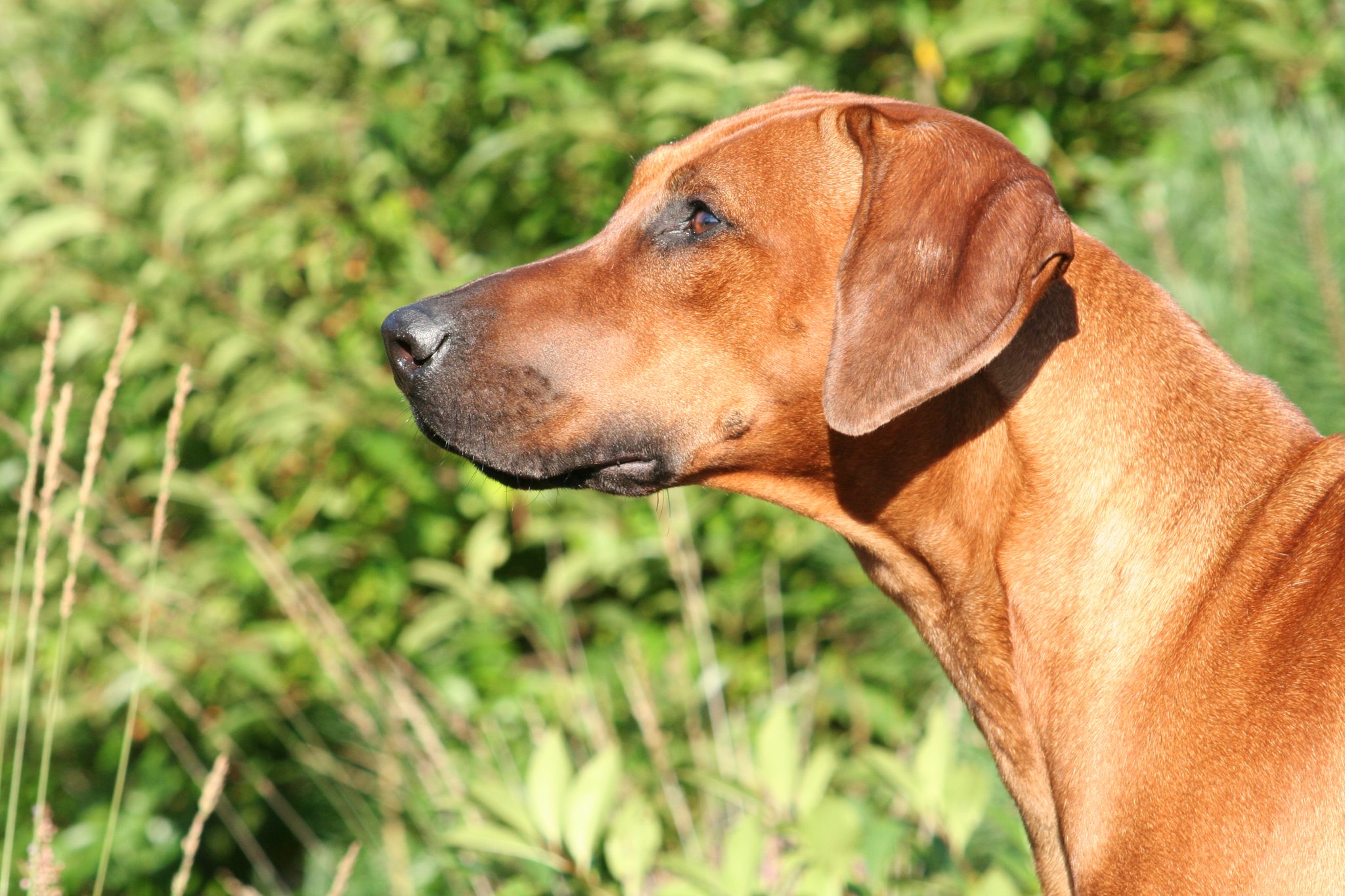
Size, Weight and Faults
SIZE The desirable heights are:
Dogs 63 cm (25″) to 69 cm (27″); Bitches 61 cm (24″) to 66 cm (26″)
WEIGHT The desirable weights are:
Dogs 36,5 kg (80 lbs); Bitches 32 kg (70 lbs)
FAULTS Any departure from the foregoing points should be considered a fault and the seriousness with which the fault should be regarded should be in exact proportion to its degree.
N.B. Male animals should have two apparently normal testicles fully descended into the scrotum.
